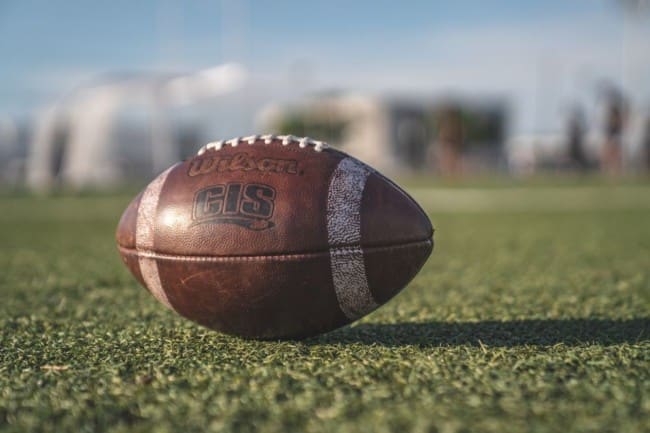Fall is officially here — which means, among many things, that football season is upon us. While many recognize Hoboken as the birthplace of baseball, few know about Hoboken’s significant influence on the development of football. On November 30th, 1876, 1,000 fans dressed in Yale Blue and Princeton Orange arrived in Hoboken, New Jersey. They would witness two football firsts: the first Thanksgiving football game and the first forward pass thrown in football history, right here at Elysian Fields. Read on to learn more about Hoboken’s role in making football history.
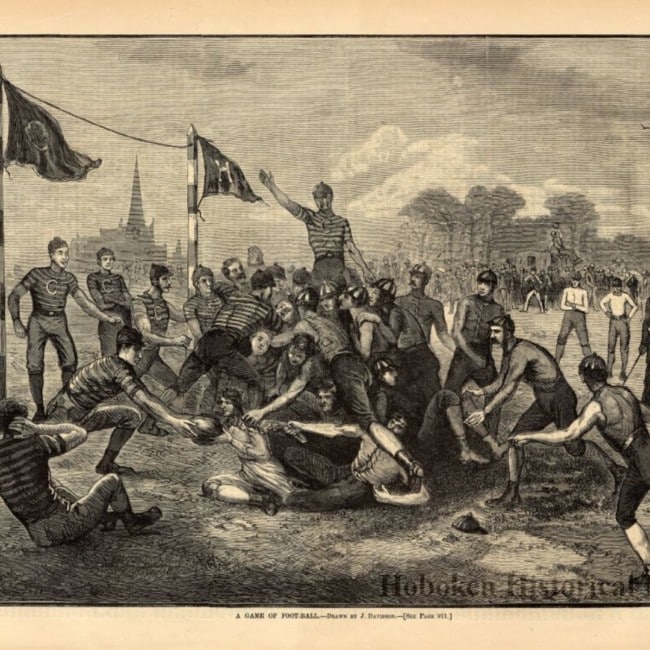
(Photo Credit: Hoboken Historical Museum)
Dragonslayers in Hoboken
Hoboken’s Elysian Fields had long been a popular spot for leisurely activities — a parkland getaway that offered open space for strollers as well as attracting sports teams and spectators alike. The St. George’s Cricket Club, nicknamed the “Dragonslayers,” moved their grounds from Manhattan to Hoboken sometime around 1850. The St. George’s Cricket Ground (located at today’s Columbus Park) hosted international cricket matches between Canada, Great Britain, and the United States — yet it was also a favorite ground for the newly emerging game of football.
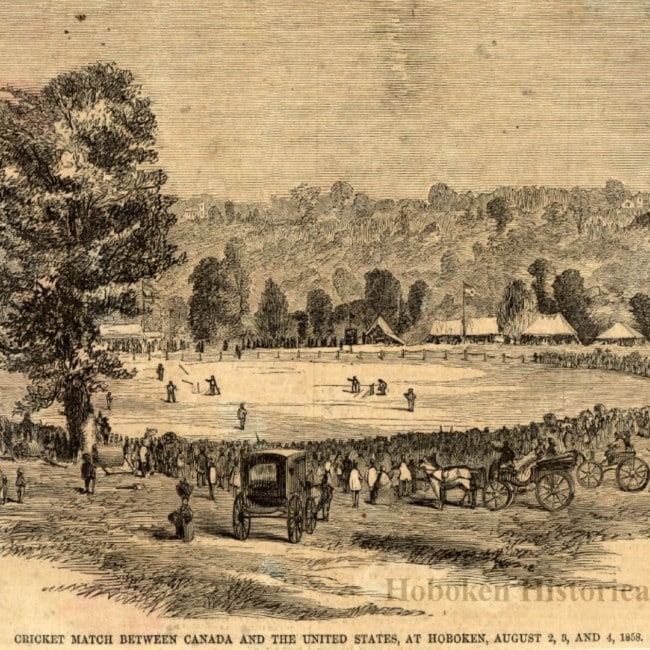
(Photo Credit: Hoboken Historical Museum)
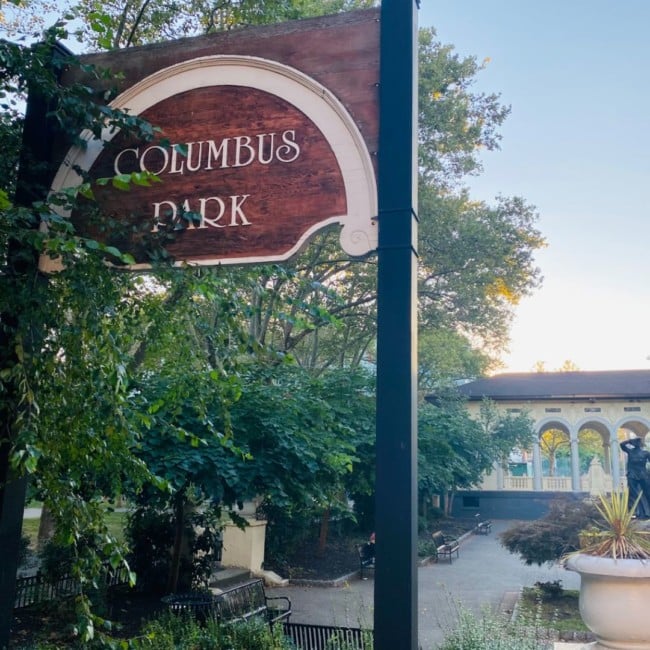
From 1877-1887, Princeton chose Hoboken for all of its “Home Games” where they competed against Columbia, Harvard, Yale, Wesleyan, and Stevens Tech.
Game Day
On the morning of November 30, 1876, the weather was brutally cold. While covering the game, the New York Daily Herald wrote, “The weather was disagreeable, as it was cloudy and freezing, and the ground was so hard that terrific thumps and bad bruises were the rule and not the exception.”
Read More: Hoboken High School Class of ’73 Remembers Hoboken 50 Years Later
Before radio and television broadcasts, newspapers had to vividly describe the scene for readers: “The Yale team wore blue skullcaps, shirts, stockings of the same color and white flannel trousers. The Princeton lads were gorgeous in their orange and black uniforms.”
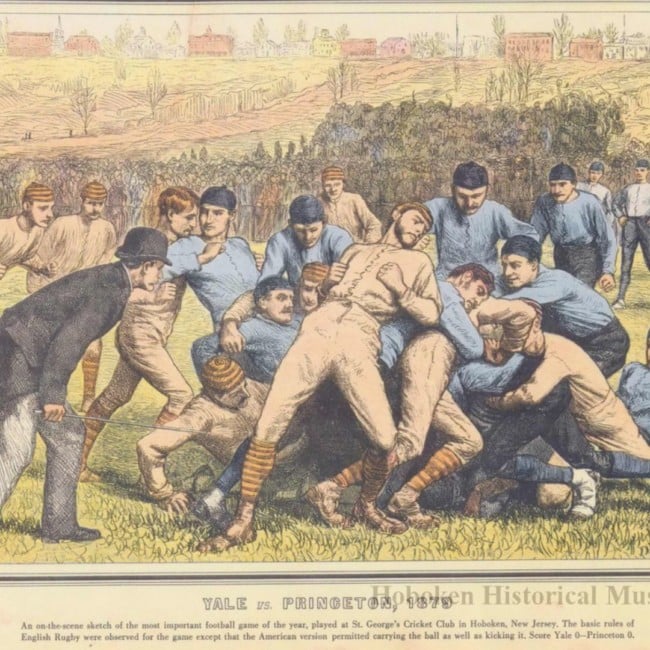
(Photo Credit: Hoboken Historical Museum)
Despite the cold, the game proved to be hotly contested. Princeton had reigned as champion for years — but new rules were agreed upon, which allowed Yale a fighting chance, and each team was eager to prove themselves superior. The game was so vicious that one of Princeton’s men was “hurt about the face and retired” while “… here and there men were thrown in every direction, Graeco-Roman wrestling, not football, seemed to be the sport.”
The Famous First Throw
20 minutes into the game, Yale’s C. C. Camp ran with the ball when he was about to be tackled. Rather than go to the ground, he threw the ball forward to his teammate, Oliver D. Thompson, who caught the ball and ran for a touchdown.
Having never seen a forward pass thrown before, the Princeton players protested, but since the rules were still so new and yet unclear, a coin toss was issued by the referee. Yale won the toss and thus the play stood. Yale ended up winning the game 2 touchdowns to 0. After this game, the forward pass was banned from football for 30 years, until 1906.
The 3 Players who Created Football on the Hoboken Field
On the field that day, 3 Yale players transformed football from English Rugby into the game we recognize today.
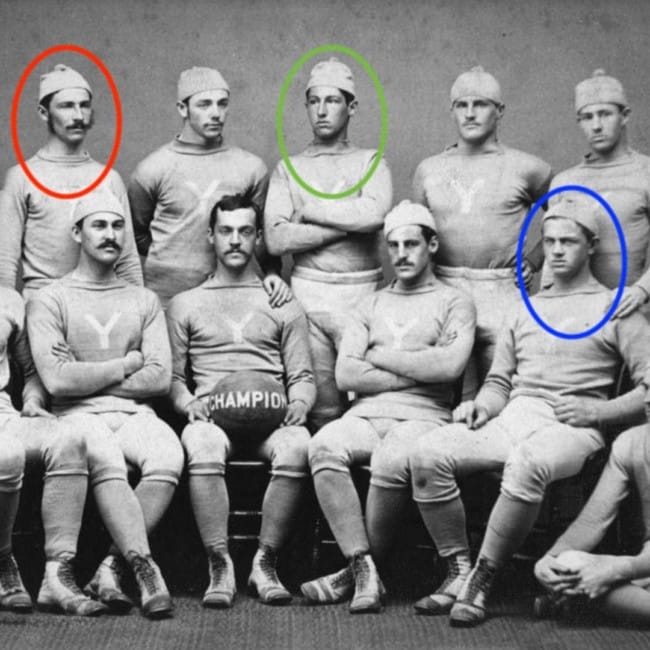
As mentioned, C. C. Camp (circled in red) threw the first legally-thrown forward pass in football history.
Oliver D. Thompson — the receiver of the throw (circled in blue) — would go on to establish football as a professional game. Managing the Allegheny Athletic Association, Oliver paid Pudge Heffelfinger $500 to play for Allegheny against their rivals, the Pittsburgh Athletic Club. The ledger of this transaction is currently displayed at the Pro Football Hall of Fame in Canton, Ohio. 7 days after signing Pudge, Oliver also signed the first professional football coach, Sport Donnelly, firmly establishing football as a professional game.
Also playing in the Princeton-Yale game that day was Walter Camp (circled in green), known as the “Father of American Football.” 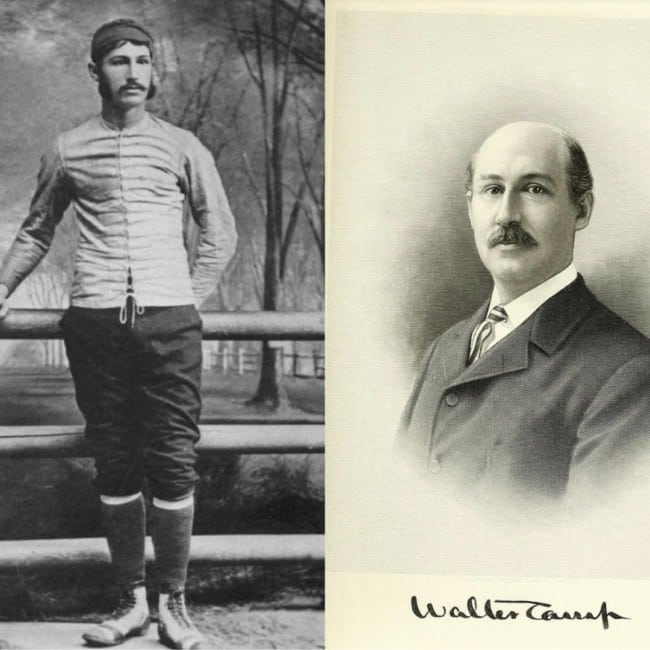
Walter would go on to devise the “line of scrimmage” — rather than the traditional rugby “scrimmage” — effectively separating American football from English rugby football. He also pioneered such innovations as the snap-back from center, the system of downs, the points system, the standard offensive arrangement of players, and the two-point defensive “safety.”
Walter reduced the number of players on the field from 15 to 11 and added measuring lines to the field. When President Theodore Roosevelt held the famous “Football Summit” at the White House to address the 19 football related fatalities in 1905, Walter was one of 3 coaches invited.
See More: Famous ‘First’ Occurrences that Happened in Essex County, New Jersey
Interestingly, while Walter had witnessed the first legal throw in history that day in Hoboken, he vehemently opposed its inclusion into football. He was outvoted and the forward pass was again legalized in 1906.
After the game, one Princeton senior was quoted saying, “Just wait awhile and we will show these fellows something!” But that day in Hoboken, it was the Yale fellows who showed the world something — for not only did they play the first Thanksgiving football game, they threw the first legal forward pass in football history.

